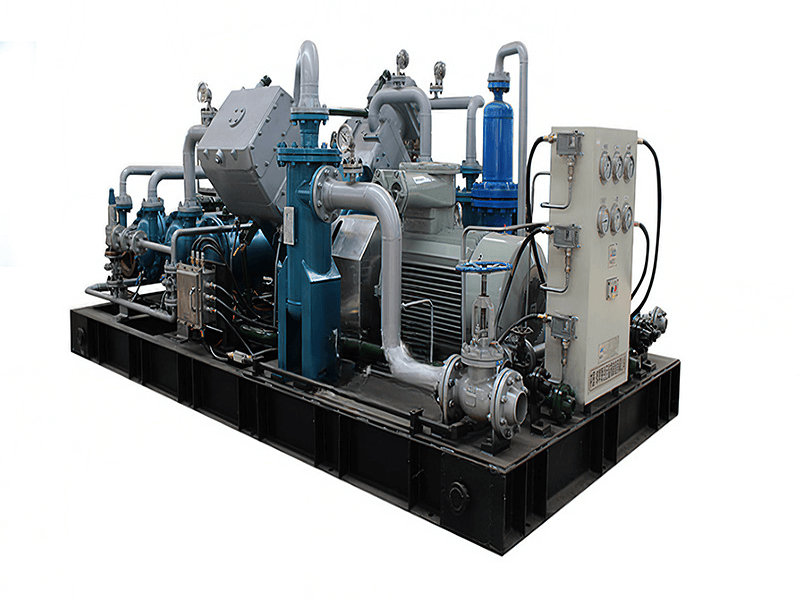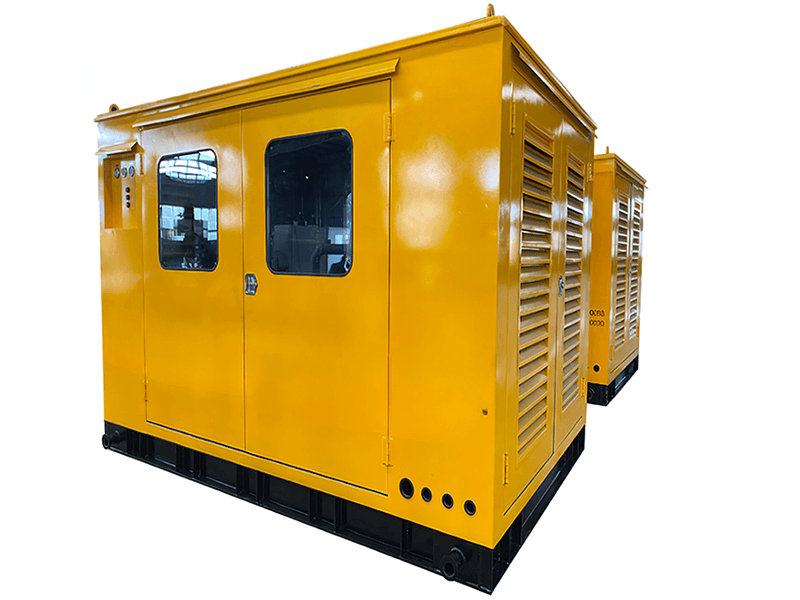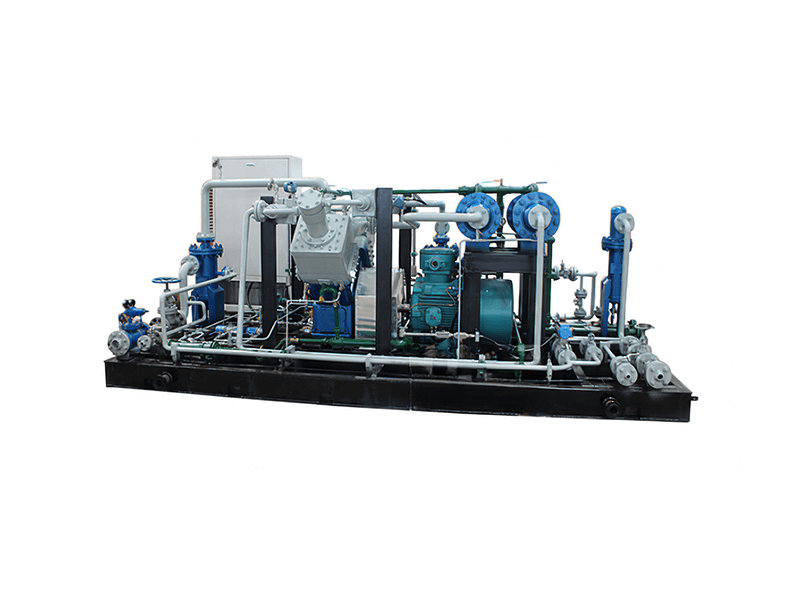【香蕉视频安装包怎么安装】最新入口
-

Manufacturers of natural gas compressors in China and other countries
Apr 16, 2024 -

Components and cost range of a chlorine compression system
Jul 09, 2024 -

Performance requirements and characteristics of natural gas compressors in different industries
Jul 10, 2024 -

Functions of casing gas compressor
Apr 25, 2024 -

Characteristics and corresponding applicable industries of different types of natural gas compressor
Jul 11, 2024 -

Boil-off gas (BOG) and their types
Jun 22, 2024
香蕉视频安装包怎么安装【乾坤易变】Apr 23, 2024
by:Anhui Shengnuo Compressor Manufacturing Co.,Ltd
Follow Us:
A natural gas compressor is a specific type of compressor designed to handle natural gas, which is primarily composed of methane (CH4) along with other hydrocarbons and impurities. Natural gas compressors play a crucial role in the natural gas industry by compressing the gas to increase its pressure, facilitating its transportation through pipelines or storage in tanks. These compressors are used in various stages of the natural gas production, processing, and distribution process.
【香蕉视频安装包怎么安装】注册登录
Natural gas compressors have numerous applications across various industries and sectors. Here are some key applications of natural gas compressors:
1. Natural Gas Transmission: One of the primary applications of natural gas compressors is in the transmission of natural gas through pipelines. Compressors are used to boost the pressure of the gas, allowing it to flow over long distances from production sites to distribution points or end-users. Compressors help maintain the necessary pressure levels to ensure a steady and efficient flow of natural gas through the transmission pipeline network.
2. Gas Processing Plants: Natural gas compressors are utilized in gas processing plants to handle the compression requirements at different stages of the gas processing and treatment process. These compressors help maintain the pressure needed for various processes such as dehydration, removal of impurities, separation of natural gas liquids (NGLs), and other treatments before the gas is transported or further processed.
3. Storage Facilities: Compressors play a crucial role in natural gas storage facilities. They are used to maintain the pressure within the storage tanks or caverns, ensuring the gas remains at the desired pressure level for later use. Compressors are employed in both above-ground storage tanks and underground storage facilities, such as salt caverns or depleted gas reservoirs.
4. Fueling Stations: Natural gas compressors are used in natural gas fueling stations for vehicles powered by compressed natural gas (CNG) or liquefied natural gas (LNG). These compressors compress natural gas to the required pressure level for efficient refueling of CNG vehicles. In the case of LNG, the compressors are used to vaporize the liquefied gas back into its gaseous state before dispensing it for refueling.
5. Industrial Applications: Natural gas compressors find applications in various industrial processes that require compressed natural gas. Industries such as manufacturing, power generation, chemical processing, and food processing utilize natural gas compressors to supply compressed gas for their specific production processes or equipment.
6. Injection in Oil and Gas Wells: In oil and gas production, natural gas compressors are sometimes used to inject natural gas into oil or gas reservoirs. This process, known as gas lift or gas re-injection, helps increase the reservoir pressure to enhance oil or gas production. Compressors are used to compress the natural gas and inject it into the wellbore, providing the necessary pressure support to recover hydrocarbons from the reservoir.

7. LNG Production: Natural gas compressors are a vital component in liquefied natural gas (LNG) production facilities. They are used to compress and cool the natural gas, converting it into a liquid state for storage and transportation. Compressors are utilized in various stages of the LNG production process, including feed gas compression, gas liquefaction, and boil-off gas compression.
8. Gas Injection for Enhanced Oil Recovery (EOR): Natural gas compressors are used in enhanced oil recovery techniques where natural gas is injected into oil reservoirs to increase oil production. Compressors deliver pressurized natural gas into the reservoir, helping to displace and push oil towards production wells.
9. Gas Turbine Power Generation: Natural gas compressors are utilized in gas turbine power plants. Compressors supply compressed natural gas to the gas turbines, where it is combusted to generate electricity. The compressors ensure a consistent and reliable supply of compressed gas to the turbines for efficient power generation.
10. Gas Reinjection in Gas Fields: In natural gas fields, compressors are employed to compress and reinject produced natural gas back into the reservoir. This technique, known as gas reinjection, helps maintain reservoir pressure, maximize gas recovery, and enhance the overall efficiency of gas production.
11. Chemical and Petrochemical Industry: Natural gas compressors play a vital role in the chemical and petrochemical industry. They supply compressed natural gas as a feedstock for various chemical processes, such as steam methane reforming for hydrogen production or as a raw material for the synthesis of chemicals like ammonia, methanol, and ethylene.
12. Refining Industry: Natural gas compressors are used in petroleum refining facilities. Compressed natural gas is utilized as fuel gas for various refinery processes, including furnaces, boilers, and heaters. Compressors ensure a consistent supply of compressed gas for efficient and reliable operation of these units.
13. Gas Distribution Networks: Natural gas compressors are employed in gas distribution networks to maintain the required pressure levels during gas distribution to residential, commercial, and industrial customers. Compressors help regulate and boost the pressure of natural gas as it flows through the distribution pipelines, ensuring a steady supply to end-users.
14. Offshore Platforms: Compressors are utilized on offshore oil and gas platforms for various applications, including gas lift for oil production, gas injection for reservoir pressure maintenance, and gas compression for gas export to onshore facilities. These compressors are designed to withstand the harsh offshore environment and meet specific safety and operational requirements.
15. Biogas Compression: Natural gas compressors can be used for compressing biogas, which is produced from organic waste materials through anaerobic digestion. Biogas compression enables the efficient storage, transportation, and utilization of biogas as an energy source for power generation, heating, or vehicle fuel.
These are just a few additional applications of natural gas compressors. The versatility of natural gas as an energy source and its widespread use in various industries necessitate the use of compressors for efficient handling, transportation, and utilization of this valuable resource.
【香蕉视频安装包怎么安装】平台地址
There are several types of natural gas compressors used in different applications. Here are the main types:
1. Reciprocating Compressors: Reciprocating compressors, also known as piston compressors, use a reciprocating motion of pistons to compress the natural gas. They are commonly used in applications with lower flow rates and high-pressure requirements. Reciprocating compressors can be either single-acting (compressing gas on one side of the piston) or double-acting (compressing gas on both sides of the piston).
2. Centrifugal Compressors: Centrifugal compressors use centrifugal force to compress the natural gas. They are widely used in high-flow rate applications where moderate-to-high pressure ratios are required. Centrifugal compressors consist of an impeller that accelerates the gas, and a diffuser that converts the high-speed gas into high-pressure gas.
3. Rotary Screw Compressors: Rotary screw compressors use two interlocking helical rotors to compress the gas. As the rotors rotate, they trap and compress the natural gas between them. Rotary screw compressors are well-suited for continuous-duty applications with medium-to-high flow rates and moderate pressure ratios.
4. Rotary Vane Compressors: Rotary vane compressors use a rotor with sliding vanes that compress the gas as they rotate. The vanes create chambers that trap and compress the gas. Rotary vane compressors are known for their compact size, quiet operation, and suitability for low-to-medium pressure applications.
5. Liquid Ring Compressors: Liquid ring compressors use a rotating liquid ring to compress the gas. The liquid ring creates a seal between the impeller and the casing, enabling compression. Liquid ring compressors are commonly used in applications where the gas contains liquids or is saturated with moisture.
6. Scroll Compressors: Scroll compressors use two interleaved spiral scrolls to compress the gas. The scrolls create a series of gas pockets that decrease in volume and compress the gas as they orbit. Scroll compressors are typically used in smaller-scale applications and are known for their compact size, low noise, and high reliability.
7. Diaphragm Compressors: Diaphragm compressors use flexible diaphragms to compress the gas. The diaphragms move back and forth, alternately expanding and contracting the gas chamber to achieve compression. Diaphragm compressors are commonly used in applications that require high purity and contamination-free compression, such as in the production of specialty gases.
8. Axial Compressors: Axial compressors use a series of rotating blades and stationary vanes to compress the gas. The gas flows parallel to the compressor's axis, and the blades accelerate and compress the gas as it passes through the compressor. Axial compressors are commonly used in large-scale applications, such as gas turbine power plants.
9. Jet Compressors: Jet compressors, also known as ejectors, use a high-pressure motive fluid, typically steam or compressed gas, to entrain and compress the natural gas. The motive fluid creates a vacuum that draws in and compresses the gas. Jet compressors are often used in applications where there is a readily available high-pressure fluid for compression.
10. Hybrid Compressors: Hybrid compressors combine two or more compressor types to achieve specific performance characteristics. For example, a hybrid compressor may incorporate a reciprocating compressor for low-pressure ratios and a centrifugal compressor for higher ratios. Hybrid compressors are designed to optimize efficiency, performance, and operational flexibility for specific applications.
11. Screw-Reciprocating Compressors: Screw-reciprocating compressors, as the name suggests, combine the principles of rotary screw and reciprocating compressors. They use a rotary screw element and a reciprocating piston element in the same compression chamber. These compressors are suitable for applications where high efficiency and a wide operating range are required.
12. Magnetic Bearing Compressors: Magnetic bearing compressors employ magnetic levitation to support the rotating components, eliminating the need for mechanical bearings. This technology offers advantages such as reduced friction, increased reliability, improved efficiency, and lower maintenance requirements.
13. Scroll Wrap Compressors: Scroll wrap compressors are a variation of scroll compressors. They use two spiral-shaped scrolls, one fixed and one orbiting, to compress the gas. The scrolls wrap around each other, creating pockets that compress the gas as they move. Scroll wrap compressors are commonly used in residential and commercial air conditioning systems that utilize natural gas as a refrigerant.
14. Floating Piston Compressors: Floating piston compressors, also known as floating seal compressors, use a floating piston to separate the gas being compressed from the crankcase oil. This design helps prevent oil contamination in the gas and allows for the compression of gases that are sensitive to oil contamination. Floating piston compressors are often used in applications that require high gas purity, such as in the production of medical gases.
15. Hermetic Compressors: Hermetic compressors are sealed compressors that have the motor and compressor unit enclosed in a single housing. The housing is welded or soldered shut, making the compressor completely sealed and preventing any leakage of gas or oil. Hermetic compressors are commonly used in small-scale applications, such as refrigeration and air conditioning systems, where compactness and ease of installation are important.
16. Modular Compressor Units: Modular compressor units consist of multiple smaller compressors that are connected in parallel or series to provide the desired compression capacity. These units can be easily scaled up or down by adding or removing individual compressor modules. Modular compressor units offer flexibility, redundancy, and improved operational efficiency in applications where varying gas demand is encountered.
17. Electric Motor-Driven Compressors: Electric motor-driven compressors are compressors that are powered by electric motors. They are commonly used in applications where a reliable and readily available electric power supply is accessible. Electric motor-driven compressors offer advantages such as high efficiency, low emissions, and ease of control.
18. Engine-Driven Compressors: Engine-driven compressors are compressors that are powered by internal combustion engines, typically fueled by natural gas or diesel. These compressors are commonly used in remote locations, off-grid applications, or situations where a dedicated power supply is not available. Engine-driven compressors provide mobility and independence from external power sources.
These are some additional types of natural gas compressors available in the market. The selection of the appropriate compressor type depends on factors such as the specific application requirements, operational conditions, efficiency considerations, environmental factors, and project budget.
【香蕉视频安装包怎么安装】娱乐全站
The prices of natural gas compressors can vary significantly depending on factors such as the type of compressor, capacity, manufacturer, features, and market conditions. Prices can also vary based on whether the compressor is new or used. It's important to note that the following price examples are rough estimates and should be used as a general reference:
1. Reciprocating Compressors: The price range for reciprocating compressors can vary widely depending on the capacity and specifications. Smaller reciprocating compressors suitable for residential or small-scale applications can range from $1,000 to $5,000. Larger reciprocating compressors used in industrial or commercial applications can range from $10,000 to several hundred thousand dollars.
2. Centrifugal Compressors: Centrifugal compressors are typically more expensive than reciprocating compressors due to their higher capacity and complexity. Prices for centrifugal compressors can range from tens of thousands of dollars for smaller units to several million dollars for large-scale industrial applications. The cost can increase significantly for high-pressure and high-flow applications.
3. Rotary Screw Compressors: The price range for rotary screw compressors can vary depending on the capacity, design, and features. Smaller rotary screw compressors suitable for small commercial or industrial applications can range from $5,000 to $20,000. Larger industrial-grade rotary screw compressors can range from $20,000 to several hundred thousand dollars.
4. Rotary Vane Compressors: Rotary vane compressors are generally more affordable compared to other types of compressors. Smaller rotary vane compressors suitable for residential or light commercial use can range from $500 to $3,000. Larger industrial-grade rotary vane compressors can range from $5,000 to $20,000.
5. Liquid Ring Compressors: Prices for liquid ring compressors can vary depending on factors such as capacity, materials of construction, and specifications. Smaller liquid ring compressors suitable for specific applications can range from $5,000 to $15,000. Larger industrial-grade liquid ring compressors can range from $20,000 to several hundred thousand dollars.
6. Axial Compressors: Axial compressors are typically used in large-scale applications, such as gas turbine power plants, and their prices can vary widely based on capacity and specifications. Prices for axial compressors can range from hundreds of thousands to several million dollars.
7. Jet Compressors: Jet compressors, also known as ejectors, are often used in specific applications where a high-pressure motive fluid is available. Prices for jet compressors can vary depending on the size and materials, but they generally range from a few thousand dollars to tens of thousands of dollars.
8. Hybrid Compressors: Hybrid compressors combine multiple compressor types and their prices can vary significantly depending on the specific configuration and application requirements. Prices for hybrid compressors can range from tens of thousands to hundreds of thousands of dollars.
9. Screw-Reciprocating Compressors: Screw-reciprocating compressors offer the advantages of both rotary screw and reciprocating compressors. Prices for screw-reciprocating compressors can range from tens of thousands to hundreds of thousands of dollars, depending on capacity and specifications.
10. Magnetic Bearing Compressors: Magnetic bearing compressors utilize advanced technology and tend to be more expensive compared to traditional compressor types. Prices for magnetic bearing compressors can range from hundreds of thousands to millions of dollars, depending on capacity and specifications.
Certainly! Here are a few additional examples of natural gas compressors and their price ranges:
11. Scroll Wrap Compressors: Scroll wrap compressors are commonly used in air conditioning systems. Prices for scroll wrap compressors can range from a few hundred dollars for smaller residential units to several thousand dollars for larger commercial or industrial units.
12. Floating Piston Compressors: Floating piston compressors are often used in applications that require high gas purity. Prices for floating piston compressors can vary depending on capacity and specifications, ranging from a few thousand dollars to tens of thousands of dollars.
13. Hermetic Compressors: Hermetic compressors are commonly used in smaller-scale applications such as refrigeration and air conditioning systems. Prices for hermetic compressors can range from a few hundred dollars to a few thousand dollars, depending on the capacity and specifications.
14. Modular Compressor Units: Modular compressor units consist of multiple compressors connected together. Prices for modular compressor units can vary widely depending on the number of compressors, capacity, and specifications. They can range from tens of thousands of dollars to several hundred thousand dollars.
15. Electric Motor-Driven Compressors: Prices for electric motor-driven compressors can vary depending on the capacity, specifications, and manufacturer. Smaller electric motor-driven compressors suitable for residential or small commercial applications can range from a few hundred dollars to a few thousand dollars. Larger industrial-grade electric motor-driven compressors can range from several thousand dollars to tens of thousands of dollars.
16. Engine-Driven Compressors: Engine-driven compressors are typically more expensive due to the cost of the internal combustion engine. Prices for engine-driven compressors can range from several thousand dollars for smaller units to hundreds of thousands of dollars for larger industrial-grade units.
It's important to note that these price ranges are approximate and can vary significantly based on various factors such as capacity, specifications, manufacturer, and market conditions. For accurate and up-to-date pricing information, it is best to consult with manufacturers, suppliers, or distributors who specialize in the specific type of compressor you are interested in.
【香蕉视频安装包怎么安装】体育直播

Hi! Welcome back.
How are you doing?
Let s talk! We’ll provide the perfect solution for you!

Since its establishment, ASC Compressor has focused on comprehensive solutions for Oilfield industry, CNG/LNG industry, Environmental protection, and Industrial compression. It has excellent quality in designing, researching, producing and manufacturing.
- Quick Link > Home > Products > Applications > News > About > Contact
-
Contact Us
- E-Mail: [email protected]
- Tel: +8618098536798/+86(0)5633698699
- Fax: +86(0)5633698699
-
Address:
No. 17 Xingye Road, Economic Development Zone, Xuanzhou District, Xuancheng City, Anhui Province, China

















